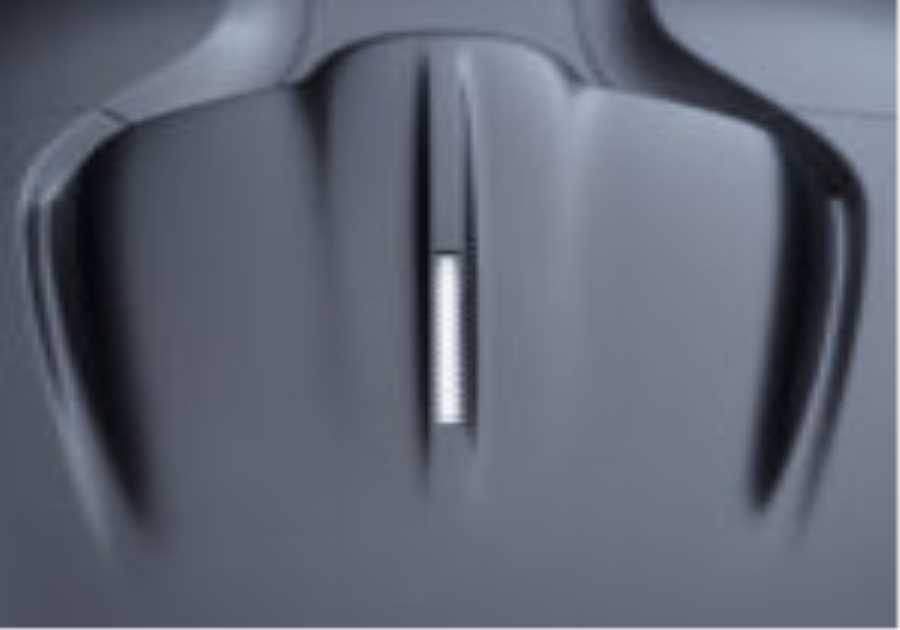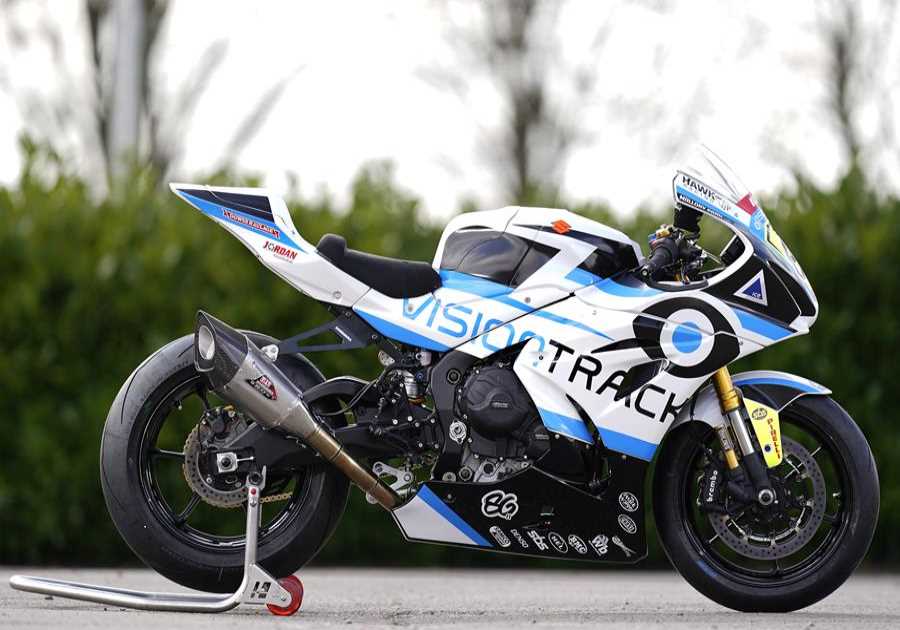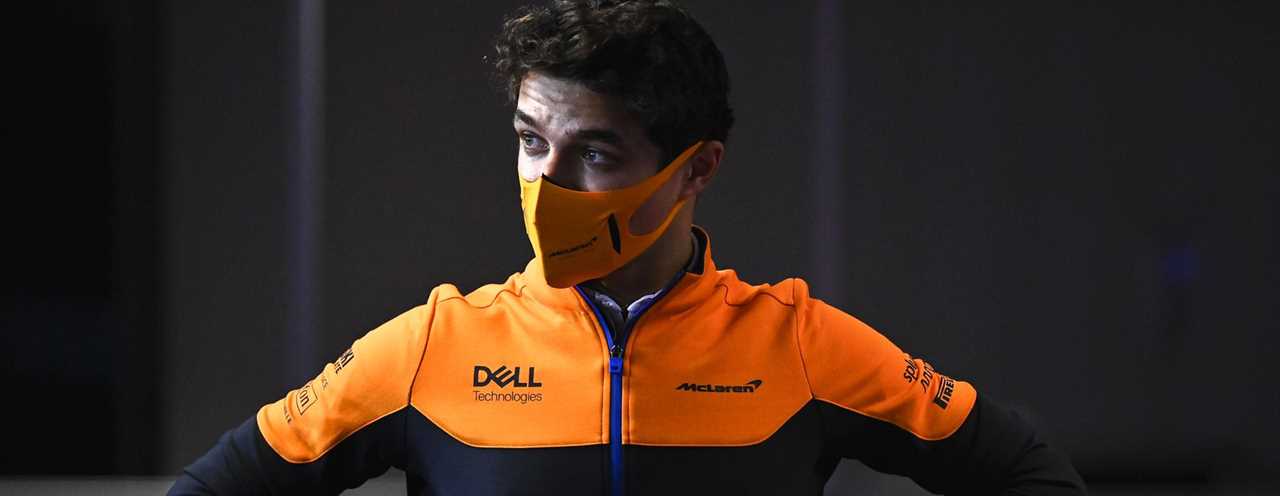
What is the meaning of life, the universe, and everything?
According to Deep Thought, the supercomputer in The Hitchhikers Guide to the Galaxy, the answer is 42. Whether that’s entirely correct is open to debate, but what’s not is humankind’s unquenchable thirst for knowledge. We’re an inquisitive bunch and that’s certainly true of McLaren fans. In the build up to every grand prix, we ask you to pose your questions to #TheFifthDriver who, with the help of various team members, gives you the answers you seek during live commentary on McLaren.com and the McLaren App.
The questions fired our way range from the sublime to the strange, but all are worthy head-scratchers – well, most of them. This got us thinking: what if we collected the best questions and answers from every race weekend this season and made them readily available to you, right here – just in case you missed them during commentary?
Cue ‘Question Time’! The ultimate, living, breathing, 2021 McLaren F1 FAQ – a repository of information that’s the next best thing to having McLaren F1 Technical Director James Key on speed dial.
Not only are we keen to give you the gift of knowledge, we’re also keen on giving away prizes – and that’s exactly what we’ll send to the person who asks our ‘question of the week’. From signed caps to driver prints, there’s some serious swag up for grabs. So get those questions rolling in and keep scrolling to check out the answers to the finest questions that have come our way so far this season. You never know, you might just learn something new…
Portuguese Grand Prix
Q: You’re heading into the first double-header on the F1 calendar – can’t imagine how intense that is normally, let alone during a pandemic with restrictions/bubbles! How do the team members manage these periods both physically and mentally? – @Aimee_J_
A: The mental and physical health of the team are interlinked, and a lot is done to ensure the well-being of everyone on the race team, particularly during the more intense periods of the season. There are many aspects to it – from good nutrition to ensuring everyone has good facilities in which to work and rest.
It can be quite busy. The plan for the back-to-back is to have pack up completed in Portimão six or seven hours after the chequered flag. Monday will be a travel day flying to Barcelona. Half the team will go to the track on Tuesday to set up the garage, picking up where the early set-up crew have left off, having started on Sunday. At this point in the season, everyone is fairly fresh. By the point of back-to-backs in November or December, the race team might get some help from the factory to ensure everyone is still in good shape.
Q: Now we have had a couple of races, how are you finding the shorter practice sessions? What impact (if any) has it had on your ability to try things out on the car? – @McLarenDoggo
A: It’s still early in the process, it has been quite an adjustment and that’s still being tweaked. So far, it’s been a little bit less of everything rather than cutting out any aspect of the run plan – because ultimately, we still have two sets of tyres to hand back after each session, and that colours our thinking.
Our long runs with a heavy fuel load at the end of the sessions haven’t been so long. And many of the back-to-back set-up experiments we’d like to run during the session are now being split between the sessions or carried out across the two cars – but it is still very much a work in progress. Certainly, there’s a lot to cram in!
Q: Do both drivers have the same pit crew or two different sets of pit crews? – @Nile_1998
A: It’s a single crew – but in qualifying or practice you might see a stripped-down ‘qualifying crew’ That’s when one side of the garage is busy with their car in the garage and can’t work in the pitlane. Doing a pit-stop with the qualifying crew is one of the things that is practiced. It would be incredibly unlikely that we’d need that to use it during a race – but not entirely beyond the bounds of possibility.
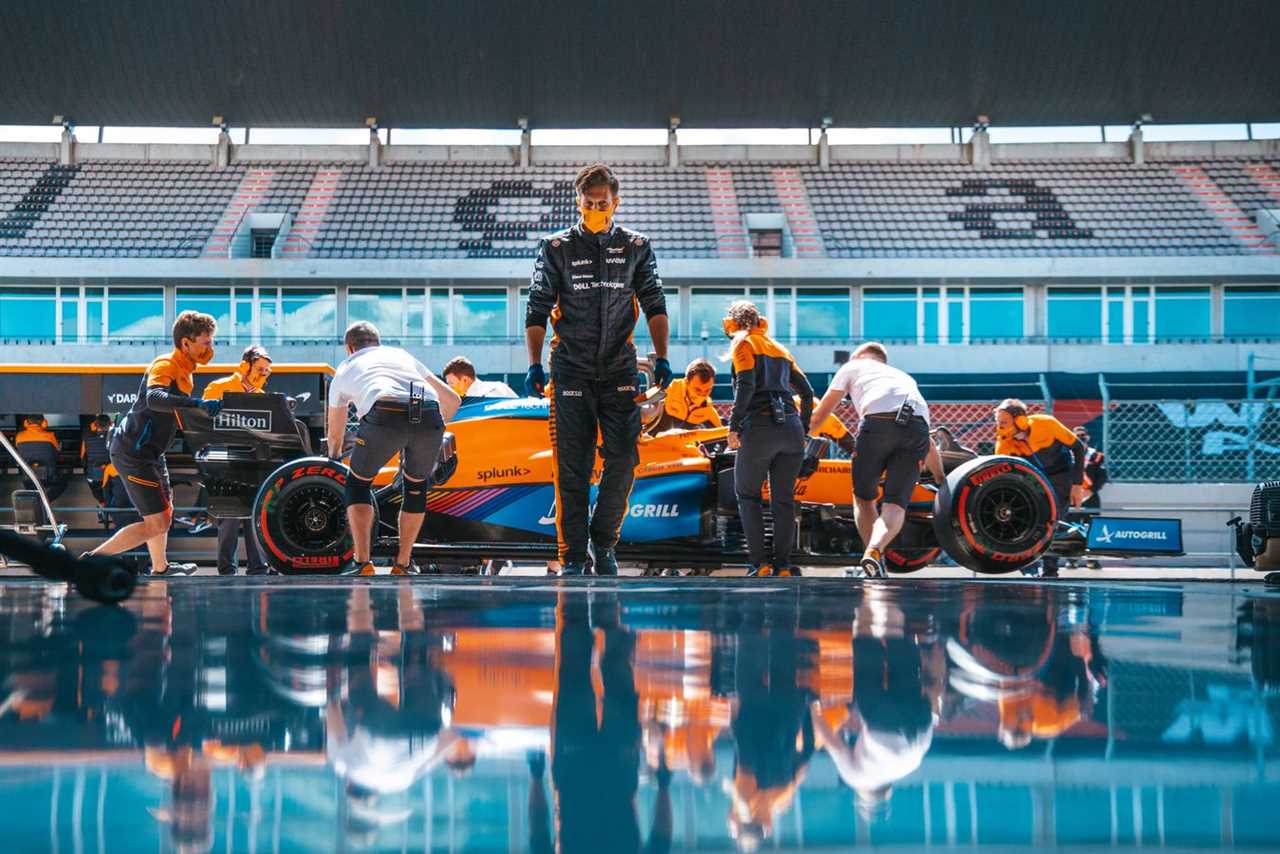
Q: We saw a lot of radio issues for Lando in the first two races. When the worst happens mid-race (knock on wood), what’s the fallback plan? – @Angel4_717
A: Radio issues come in all sizes, some of them outside the ability of the team to control, so there are always fallback options. The most basic – but often most effective – is the pit-board. If the comms fail, the team can display more information via the board. The most vital being whether the failure is two-way, or if they can hear the driver.
Sometimes it’s a specific issue with a particular comms channel. In Bahrain, the problem for Lando’s side of the garage was restricted to the pit wall comms, so Will Joseph decamped to the garage to use a replicated set of screens at the engineers’ island. In Portugal, the engineers have spent time testing the pit wall comms during the practice sessions.
If it’s a problem on the car, the team will sometimes swap the steering wheel at a pit-stop – this sometimes cures the issue, and it’s a change that’s practiced. Sometimes it’s just the driver’s microphone being knocked out of place – and there’s no fix for that in-race.
Q: Does the change of venue from Montreal to Istanbul [due to the Turkish Grand Prix stepping in to replace the Canadian Grand Prix this season] affect your logistics and the sea freight? – @alasdairmulhern
A: This year it doesn’t – but usually it would. Logistics is something of a dark art, so we’re going to turn that one over to Jono Brookes, director of F1 Build at the McLaren Technology Centre: “In terms of our air freight operations very little changes other than timings and aircraft, as Canada was a flyaway race anyway – the same as Turkey.
“For our sea freight, these containers haven’t left for Canada yet, and are still in port, so these will now get rerouted to deliver to Turkey instead. Canada was already a standalone sea-freight shipment this year. Normally, the sea freight from Australia goes to Canada, across the Pacific – but with the Australian Grand Prix getting postponed and moved towards the end of the season, this forced Canada to be standalone.”
Q: Roughly how many extra front wings do y’all take each race? – @Nile_1998
A: It varies from race to race. The standard load-out would be six wings in total – perhaps not all of the latest spec. There might be more if there’s an upgrade experiment to do, or if we’re going to a circuit well known as a front wing breaker.
Q: When it’s a race weekend and the drivers aren’t on the track, what are they doing? – @Iduskaa_
A: For most of the time following FP3, they’re in briefing sessions. First the debrief after FP3, and then the briefing for qualifying. They’ll be on a headset in the truck offices, talking to their engineers and a distributed crew here at the track and back in the MTC. Their input is very important in the decision-making process.
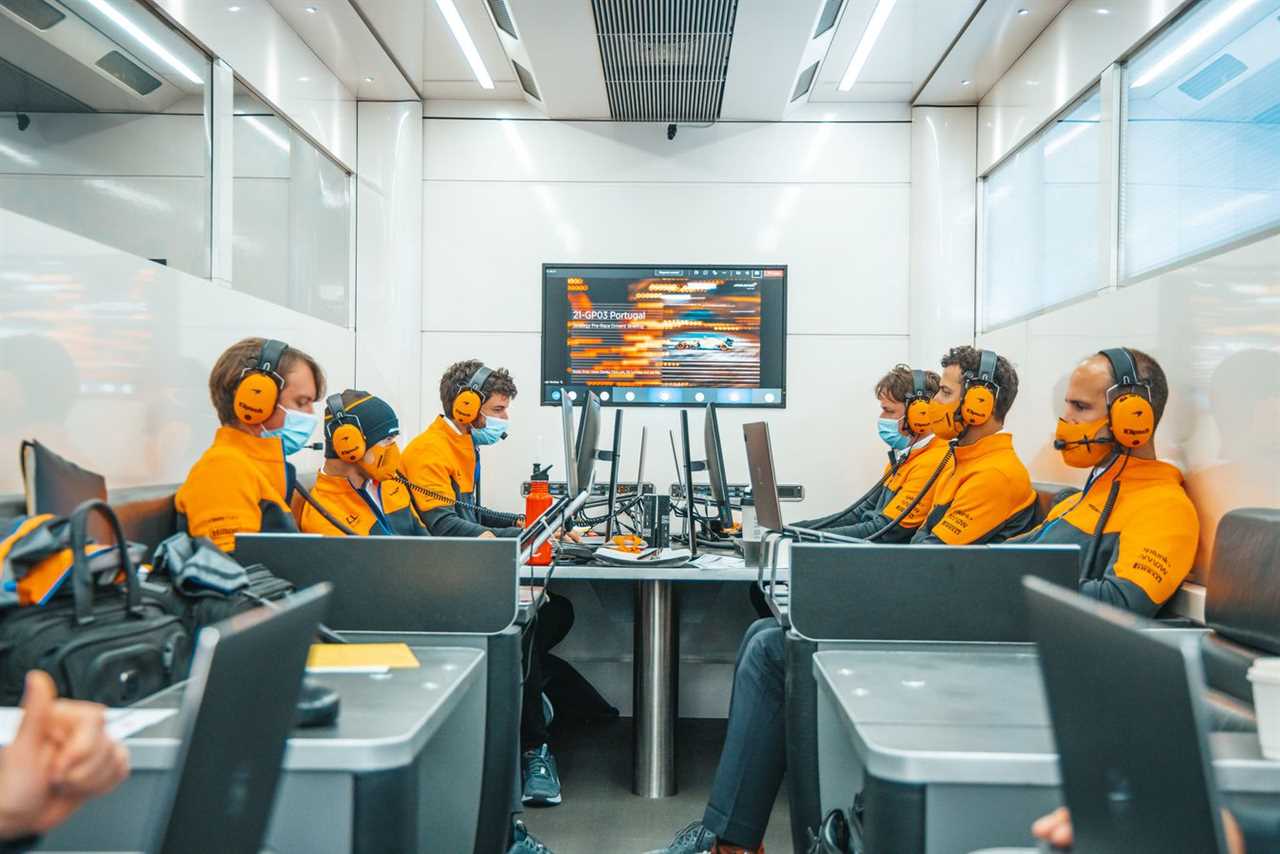
Beyond the homework sessions, they have a printed schedule that fills every available minute of their time over the race weekend. With empty racetracks and locked-down cities, they have fewer sessions meeting fans. Their media appearances are still active – albeit often via video link. They’ll have a track walk to do at the start of the weekend, studying the kerbs and any interesting lumps and bumps on the surface, with their engineers, plus plenty of preparation in the garage – checking things like seat fittings, wing mirror positions and so on.
They’ll also have to work with their trainers. Not necessarily fitness sessions – because driving the car takes care of that – but recovery sessions, massage and so forth. They’ll also have a fairly strict nutrition and hydration routine. Not just what they eat and drink but also when they eat or drink it. Before jumping into the car for qualifying, they might want to get the heart rate up and work on their reactions by tossing a ball around or similar exercises.
Q: What weather conditions do the pit crews prefer for race day? – @kerley_erin
A: In a global sense, definitely dry! A pitlane can have lower grip than the race track – either because of different tarmac, or a concrete apron, with lots of slippery painted lines as well. On a wet day, there’s a lot more risk of a driver losing control.
In a wider sense, a wet race day also means wet pack-down – and absolutely nobody enjoys that. It’s also the gift that keeps on giving, as anything that goes away wet, comes out damp at the other end, which isn’t how you want to start a race weekend. That said, if the team is likely to benefit from a disrupted race, then everyone is more than happy to arrive at the track on a Sunday morning under dark clouds.

Q: During a race weekend, does the team have time to see the cities they travel to? Or is it all business all day every day? – @hallefrisco_
A: That’s a good one – particularly for a back to back. We’ll pass across to Tom Briggs, team leader, support crew, to answer: “Time off? Not a lot! We arrive the day before we start work and then leave early on Monday after the race. We get the odd evening but most of the time it’s airport-hotel-track. When we get the odd evening free we do like to do some turbo sightseeing! We are good at getting in the sights in a small window of time!”
Emilia Romagna Grand Prix
Q: How much of a difference does it make to plans for our strategy etc having data from the 2020 race, compared to heading there last year without it? Does it mean we are braver, with that in our pocket? – @Sareyware
A: It’s incredibly useful to have the data – but more is better! Having only one practice session last year meant we didn’t do the usual range of set-up tests. Add in reduced downforce this year, a longer DRS zone and an entirely new power unit, and there’s lots to do.
Q: How long does it take to set up the garages etc on a Wednesday and pack up on a Sunday? – @Gingecupcake
A: Sunday evening the pack-up takes around six hours – but setting the garage up takes longer because there’s longer lead-time jobs like preparing a floor. Tom Briggs, support crew team leader, can add more detail on this: “We have the ESO (event support operations) team travel out a few days before us. This is a team of three or four. In Europe they have a truck with all the garage panelling and the main FOH (Front of House) which they set-up before we arrive. On a flyaway race, they handle all the sea-freight, which is now three forty-foot containers.”
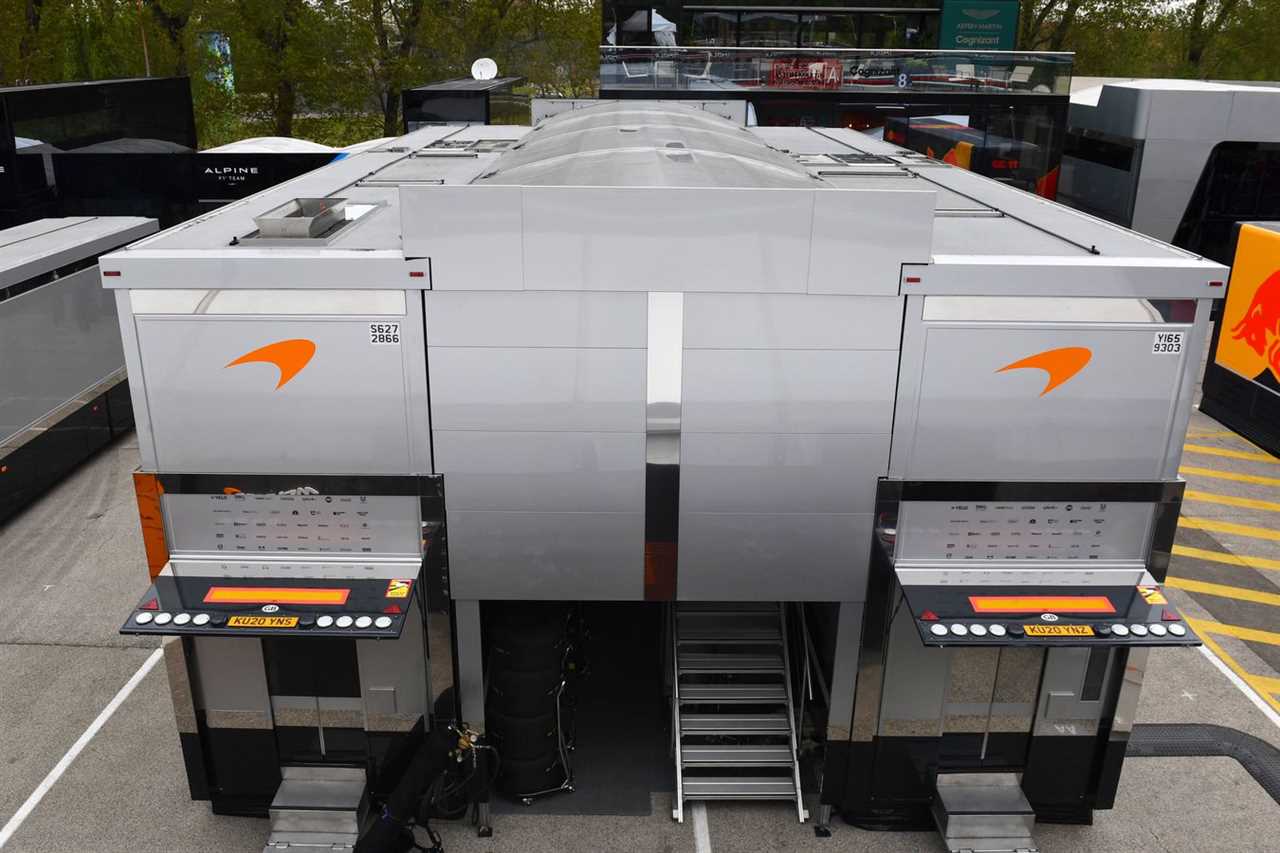
Q: How does it feel to still race without a public, even though a year has passed since the beginning of the pandemic? What races are you looking forward to the most when the public will be back? Do you think we’ll be able to come back supporting you soon? – @_mmargheritaa
A: After a season of racing without fans in the grandstand it doesn’t seem quite so strange as it did last summer. It’s a little bit like going testing – though having a really tight championship battle is perfect for making sure it still has the proper race weekend urgency. There will likely be races with fans in the grandstand this year – and hopefully as the season progresses it will be possible to safely take more races out from behind closed doors.
Everyone will have their own preference but for #TheFifthDriver, the biggest difference between full and empty will be felt at tracks where the grandstand opposite the pits is almost within touching distance of the grid. Places like Interlagos, Montréal and Suzuka have a tremendous buzz when they’re packed.
Q: Does anyone in the pit crew have a pre-race ritual they do every GP? – @kerley_erin
A: There aren’t too many lucky charms hanging around the garage but everyone’s got their own special way to prep, whether that’s how they arrange their kit in the garage, or where they like to sit for lunch. The pre-race procedure on the check-sheet has a ritualistic feel to it as well. It’s the same calls at the same time. While everyone knows what they’re doing, it’s very unsettling if there’s a comms problem or another disruption that means they aren’t received. It interrupts the cadence.
Q: @fergieweather saying it will be a bit chilly and there may be some wet stuff on Sunday. Coming from testing and the first race in the heat of Bahrain, how much of a factor will the temperature play on the car’s performance? – @McLarenDoggo
A: In many respects, it’s the opposite to the usual early season issue, where we’ve been testing in Barcelona in cold conditions, and then head out to warmer climes at the start of the season. The cooler tracks will generally increase the likelihood of understeer, and degradation should be lower.
Q: Who joins the drivers for their track walk and what is discussed during this walk? What is everyone’s task during the walk? – @F1Wouke2020
A: The drivers walk with their race engineer, performance engineer and physio. Sometimes other engineers from their car group might tag along as well. Mostly they’re looking at the corners rather than the straights – though the driver will be looking for visual clues at his braking points. They’re looking at all the stuff that you can only really understand with your own eyes: new patches of asphalt and joins; the feel of individual kerbstones, thickness of the painted lines, style of runoff, culverts and gutters etc.

There are specialist tasks on the track walk: the performance engineer and the driver for instance will have a discussion about brake and differential settings – fine tuning their plan to get the best out of the car but, at the same time, not overloading the driver with buttons to push. It’s also useful to ensure everyone has the same mental image of the track and can use the same references and terminology. Will Joseph, Lando’s race engineer, for instance, missed this race last year, so it’s useful for him to spend the hour on track with his team.
Q: After seeing the racing here last year, is qualifying even more important? – @AlanSabatino
A: This is the crux of the matter. It’s absolutely vital here. If anything, last year’s race confirmed what the sims and the history of the circuit suggest: overtaking is very difficult and track position is vital. It might be a little different this year, because the single DRS zone has been extended by 145 m – which makes it about as long as can be. So overtaking might be a little easier. But the assumption is that qualifying position and a good start will still be key to getting a good result.
The other factor that feeds into that is strategy. With a circuit that isn’t harsh on tyres – as was the case in Bahrain – and with a very heavy pit-loss time, there’s an expectation of a one-stop race, which limits the ability to make up places through strategy. Altogether, it means a lot of focus goes into getting the car right for qualifying.
Q: There are so many engineers at the console in the centre of the garage, race engineer and performance engineer, but there are more, what are their roles race weekend? Who sits pit lane vs the garage? – @MrsRago
A: On race day, the pit wall will feature Paul James, team manager, Andrea Stella, executive director, racing, Randeep Singh, head of strategy and sporting. Andreas Seidl, team principal, plus race engineers Tom Stallard (Daniel) and Will Joseph (Lando).
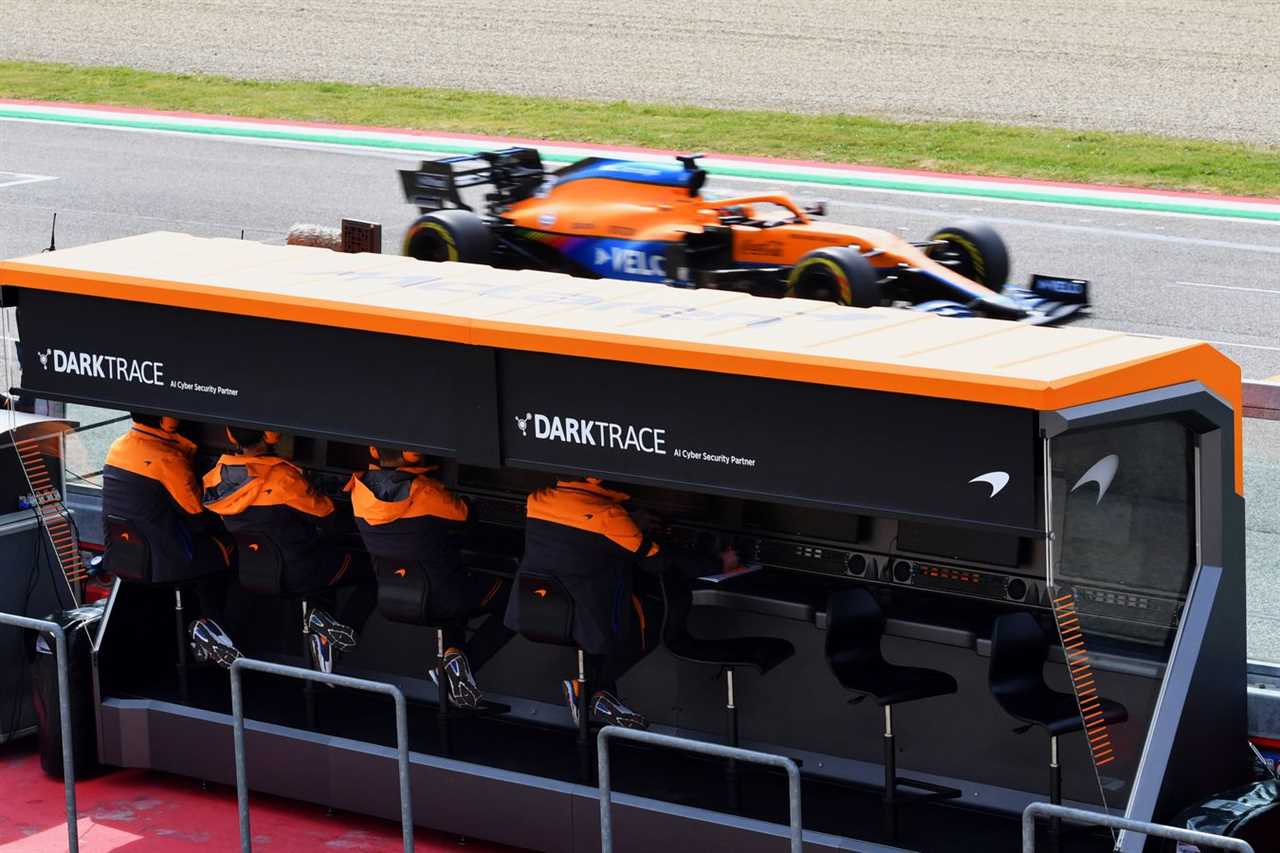
The race engineers generally only go to the pit wall for the race. For qualifying and practice sessions, they’ll be at the engineers’ island in the middle of the garage, about a metre away from their car. They’re still talking to the driver and no.1 mechanic on the radio – but they also have eye contact and can communicate with gestures. Joining them at the engineers’ island are performance engineers Jose Manuel López (Lando) and Adrian Goodwin (Daniel) with Hiroshi Imai, director, race engineering at the end of the island, next to a terminal that’s used by a trackside aerodynamicist or any other senior engineer at the track.
Somewhere else in the garage, or in the transporter, or team building – it varies – there will be an engineering desk, where systems and controls engineers for each car sit, together with our power unit team from Mercedes AMG HPP. There’s also a large part of the engineering team working back at the McLaren Technology Centre in mission control. Mark Temple, principal car performance engineer, is there, passing insight to both the race engineers. And each car is being monitored by a team there, covering vehicle dynamics, aerodynamics, strategy and so forth.
During the race, everyone is supporting the race engineers, passing information, helping them make informed decisions. Some of that will be passed by the race engineer to the driver – he’s the only person that usually speaks to the driver – other information simply helps the engineer understand the condition of the car and the state of the race.

Q: Is everyone allowed to eat snacks in the garage, or just Lando? – @robi_won_kanoby
A: We love this question! There is a serious answer though. If the driver is having a snack in the garage, it’s something handed to them by their physio, designed to raise their energy levels. Sometimes it might be a drink or a gel, occasionally it’s a snack.
As for everyone else, yes, in the back of the garage, behind the front-of-house panelling, there will be a selection of snacks. Sandwiches, salads and wraps in the fridge, nuts, fruit and cereal bars. It’s important to have that there. Some days the crew doesn’t have time to walk across to the motorhome for a hot meal, so they’ll grab a snack when they have a minute spare. Sometimes it’ll be at the insistence of team management. Sometimes the catering crew will deliver hot food to the garage too. It generally doesn’t come front of house though – except after quali and the race when everyone takes a couple of minutes to have an ice cream.
Bahrain Grand Prix
Q: What sort of plans may have more priority during the shortened practice sessions? Has this already affected the way weekends are being approached? – @BonzoKEN
A: This year our Friday sessions are 60 minutes rather than 90. This definitely alters our thinking. The sort of thing you’ll see throughout the season is going to be a little different to what we’ve been doing in the past and involve a few more conscious trades: we can’t do everything we used to do. In the past, for instance, we may have had a programme where we planned to do a specific test that involved taking the floor off and changing it between runs, in a session that we also intended to finish with some high-fuel continuous running. Now, you might need to choose between one or the other.
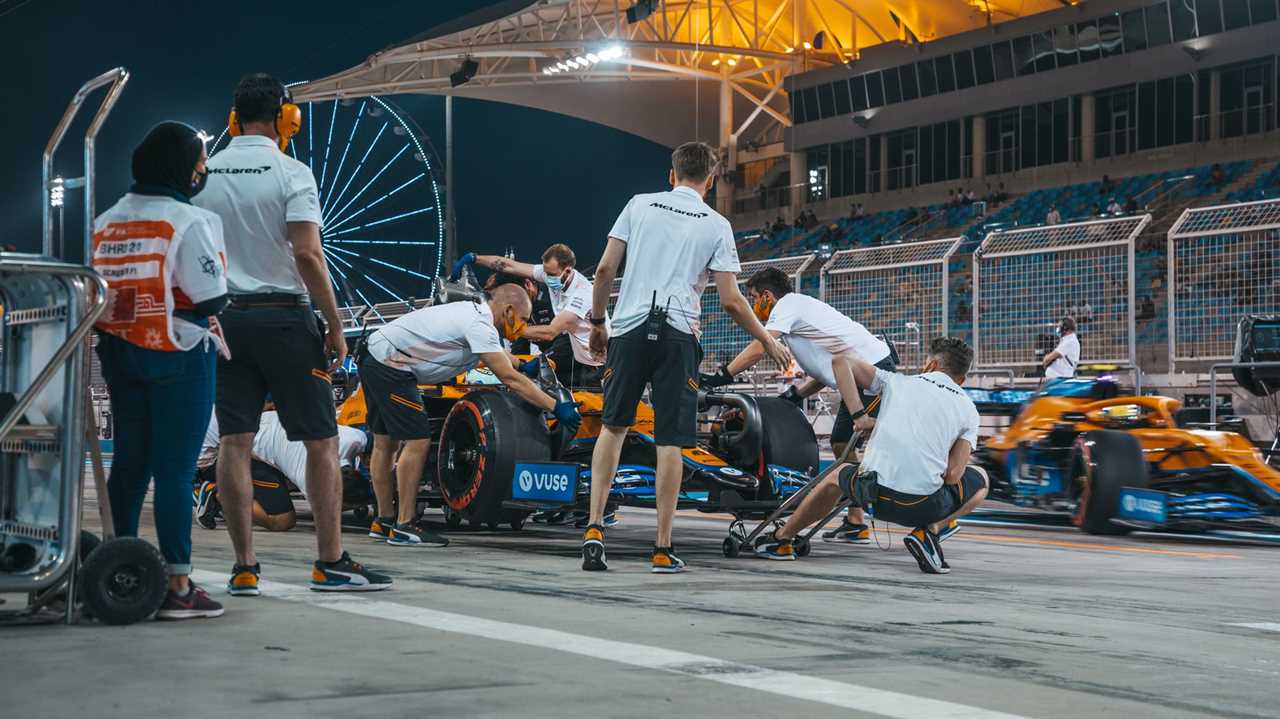
What that’s likely to entail across 2021 is more split configuration testing between the two cars, or tests that take place between FP1 and FP2. We’ll be trying to do quicker turnarounds in the garage between runs and will be reluctant to do the sort of test that requires 20-30 minutes of downtime in the garage. Ideally, by making those compromises and rebalancing our programme, we’d be able to get as many laps in during a 60-minute session as we used to do in 90 minutes – but in reality, we’ll probably be doing fewer laps and will be time- rather than tyre- or mileage-limited.
Q: How much is known about the durability of this season’s new tyres in race conditions? – @f1mclarenfan
A: 2021’s tyres are the same compounds as 2020 but with slightly different constructions. They’re designed to be a little more robust but as a consequence seem to be giving up a little bit of front grip. They’re expected to be a little bit slower – but the starting pressures mandated by Pirelli will be a little lower.
Q: Will the shortened practice sessions impact on testing long runs and reliability with the new engine – how do you think teams will manage this? – @Aimee_J_
A: Inevitably, there will be a little bit of clipping in the length of long runs, which perhaps means a less complete dataset for our specific installation, and less knowledge about the cumulative effects of factors like vibration and cooling. Nothing much to do about that – and it’s the same for everyone.
On the other hand, there are eight cars running the same Mercedes power unit, which means a broader dataset overall. Our mileage will shrink – but perhaps not by much. With the proviso that one Friday programme isn’t a big enough dataset to really know, there are some early statistics to look at.
Last year, in FP2 for the Bahrain Grand Prix, the McLarens did 30 laps and 33 laps. That’s higher than usual because we had an extra set of test tyres. Take those out and it was 25 and 23 laps. The long runs at the end of the session were 17 laps each. In FP2 this year, the lap counts were similar: 22 and 25 laps, but the long runs were cut to 12 and 13 laps.
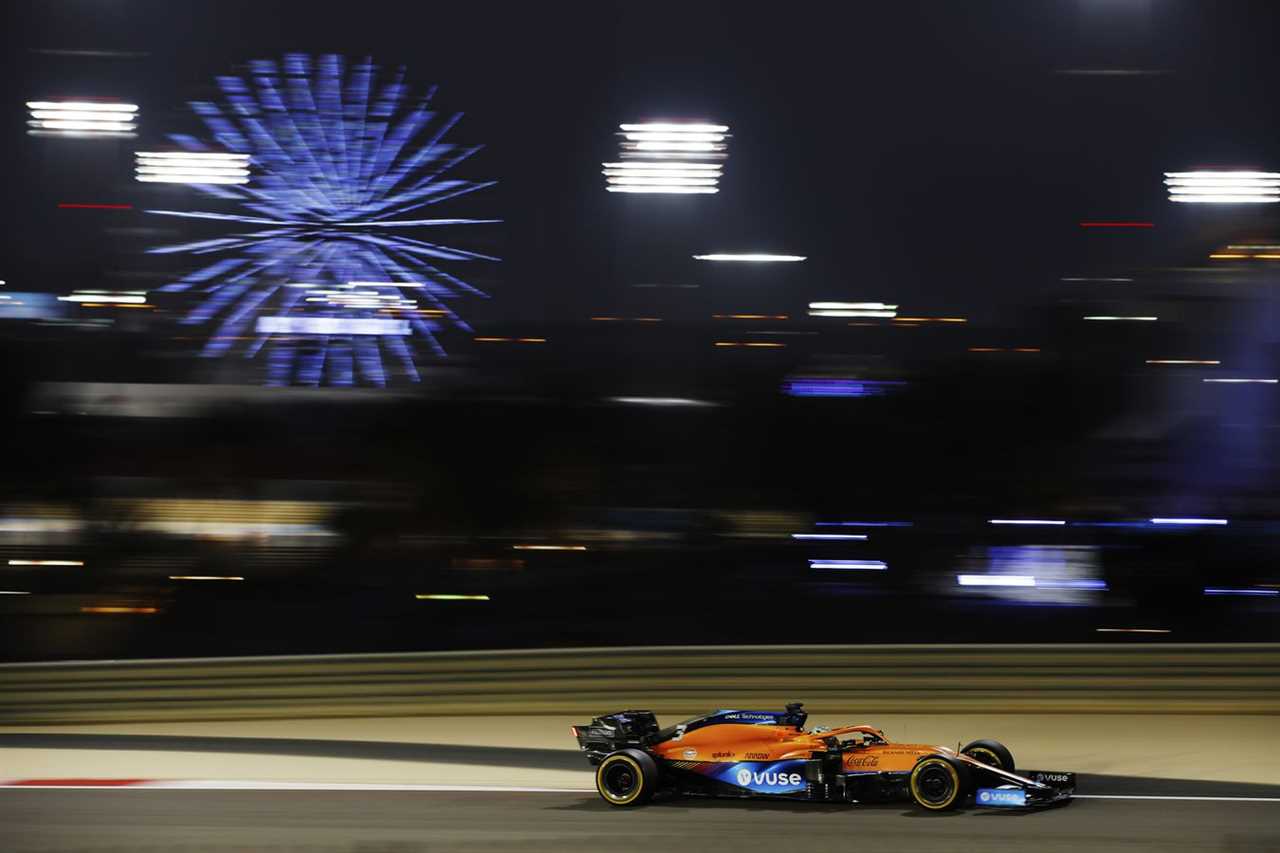
Q: How do you compare sim data to the actual car itself? Is it usually wrapped up in pre-season testing or do you continuously keep doing those tests in the first few races? – @AnonymousBoeing
A: It never ends. Every session on track provides another set of real-world data that will be compared to the models and then used to refine them. Simulators have reached a high level of sophistication now, but there are always improvements to be made in the correlation – and that’s especially true of a new car.
Q: How is the mood in the team, apprehensive or quietly confident? – @PeteTunstall
A: Frankly Pete, if anyone in the pitlane isn’t apprehensive then they’re probably not doing it right! The opening qualifying session is one of the great moments of the season, with everyone keyed up for the first chance to see genuine, outright pace. It’s very exciting.
Q: How ‘out of routine’ did you get through the winter break? Last season’s run of races was pretty intense, and the team worked hard to ensure everyone got some time away before the new season started – and three months without a track day does leave everyone a bit rusty. – @_charleylouisew
A: There’s plenty of work done at the factory to restore sharpness, but it’s really only being in the garage, at the tests and now the race, that brings everyone back up to ‘match fitness’. But even now, things that felt completely natural take an extra moment of thought. That’ll go away fairly rapidly.
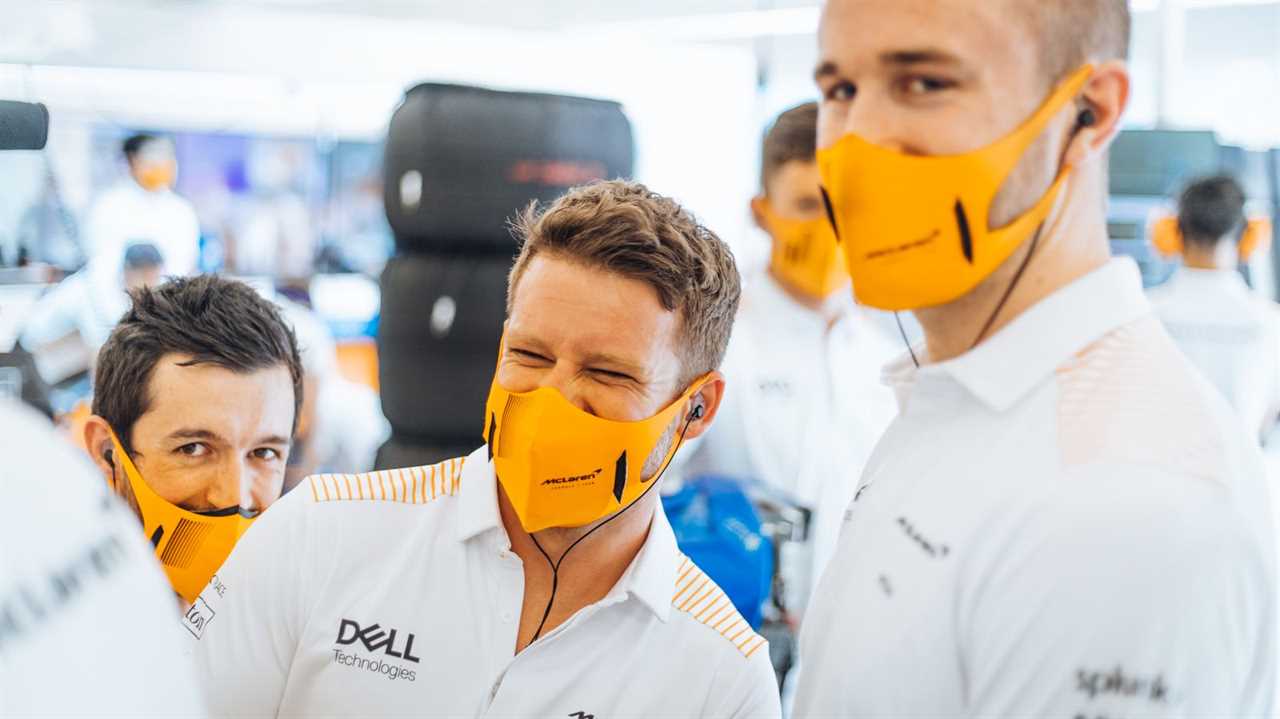
Q: Describe racing in Bahrain in three words! – @yerisbtch
A: Lots of answers from around the team, most of which involve the word ‘hot’ – but right now it’s: launch, strategy, and tyres. We’ve seen everyone’s genuine one-lap pace in qualifying – but long runs are a different matter.
In the race, position after the first lap will play a large part in determining strategy, and then making that strategy work will depend on the relative unknown of getting the best out of the tyres under those conditions. While we did race simulations at the test and on Friday, it isn’t quite the same thing.

Q: Who chooses which side of the garage each driver and their teams go to? – @kerrxsmxth
A: For the last few years, incoming drivers have inherited whichever side of the garage was free. When Lando and Carlos Sainz started at the same time, they took the sides their race engineers, Tom Stallard and Will Joseph, were already working on.
It has been done other ways in the past: there was a time when the driver finishing higher in the championship the previous year got the stall nearest the pit entry. That led to a quite strange situation of Lewis and Jenson swapping sides on a regular basis depending on whether they were turning right or left to go to the pit exit.
That system went away about a decade ago and afterwards it was fixed at the start of the season. (Everybody found it very strange when Jenson subbed at Monaco and was on Fernando’s usual side rather than ‘his’.) Daniel has inherited the right side (looking in) from Carlos, with the engineers and most of the crew who previously worked on that side.
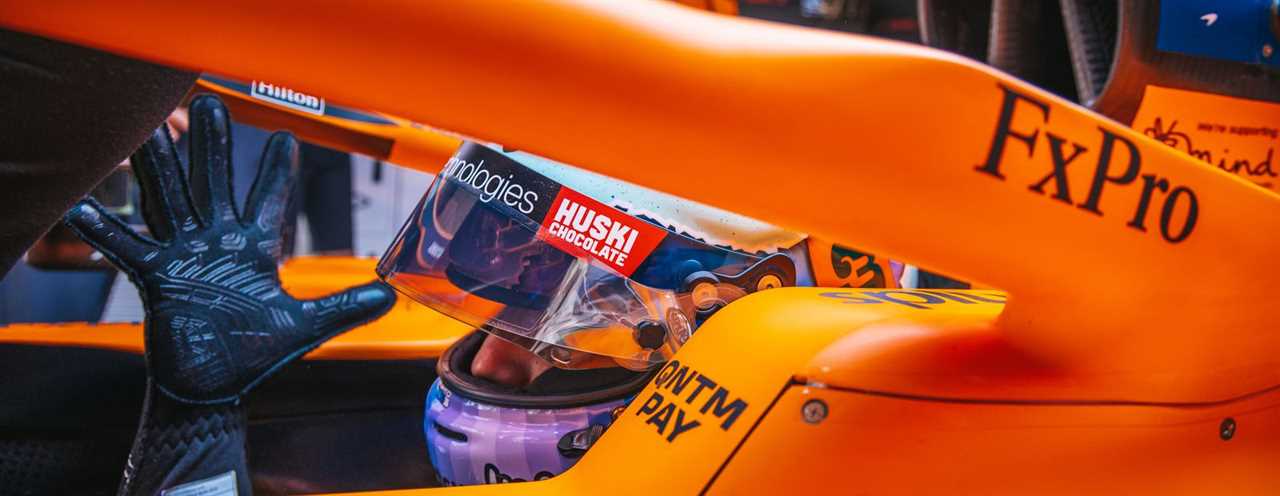
That was the weekend that was
The Portuguese Grand Prix according to social media
Read More
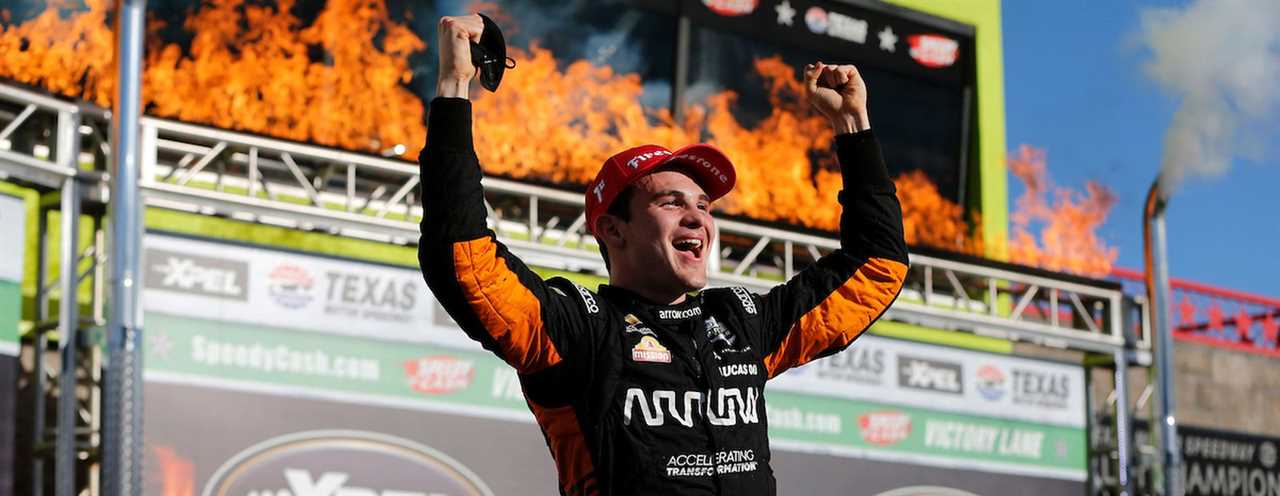
The return to victory lane
A closer look at Pato O’Ward and Arrow McLaren SP’s Texas triumph
Read More
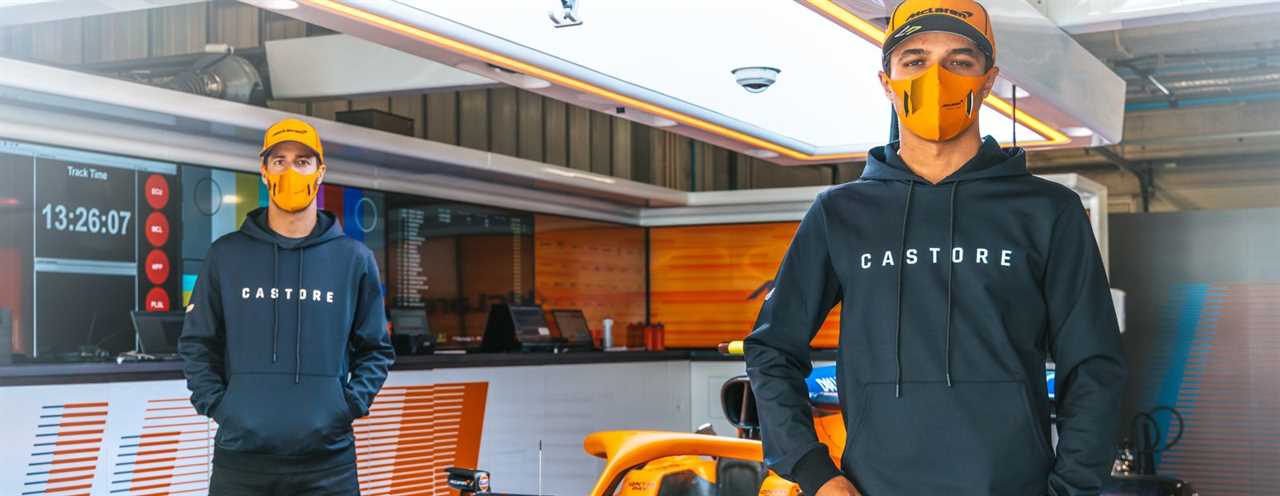
Castore joins
McLaren Racing announces multi-year partnership with British premium sportswear brand
Read More
Join the team
McLaren Plus is our free-to-join fan loyalty programme, bringing McLaren fans closer to the team with the most inclusive, rewarding and open-to-all fan programmes in F1 & esports.
Sign up now, or current members can amend their details in the form below if necessary.
The post McLaren Racing – Question time first appeared on monter-une-startup.



